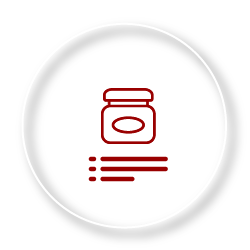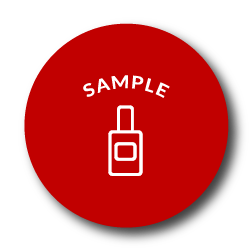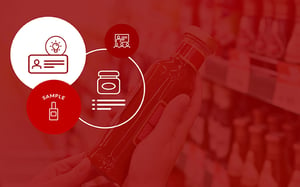It is one of the most stressful processes for an entrepreneur. When you create a product, you’d do well to target the smaller local retailers to get your products listed. By doing so, you can use this as a base to build a positive record of sales and establish your target market. And you’re hoping that retailers agree to take your products on.
Of course, with this comes many risks. These risks are not only for you. Retail buyers need to ensure that the products they buy from you sell in-store. When they purchase a new product and add it to the range, they want to see a record of accomplishments behind them.
A positive record will help you, as a new supplier, to not only continue that relationship but also target larger retailers. It’ll give you the credibility (and confidence) to introduce other products and argue to get them listed too.
Before attempting to get your products listed, if you offer edible foods or groceries, you would need to look into getting a food safety certification. You will need to ensure your company has been VAT registered (South Africa) or the equivalent in your country (Good and Services Tax - GST). You will also need to obtain a Universal Product Code (UPC) for your product.
About the contributors
Brian Nyamachiri joined DotActiv in 2013. An operations manager with over 10 years of retail experience, he currently oversees the Adcock Ingram, Danone, GSK, Dr Oetker, Loreal, Makro, Premier Foods, Revlon, and UPD accounts.
Kelly Cordeiro joined DotActiv in 2017. Since joining, she has had experience running many accounts, including ACDC, Ultra Liquors, Diageo, JDE Coffee, GSK, Shield, Permoseal and Pick n Pay.
Ilze Klopper joined DotActiv in 2018 as a space planner, working on the Amka account. Here, she is responsible for all the business analytics in all categories. Ilze is currently working on the development of Custom Reporting Templates within DotActiv Software.

You must know the retailers that you plan to supply
Before you can begin to argue why a retailer should list your products, you must first know who you intend to supply.
Why? It should be straightforward.
By knowing this, you can establish the needs of the retail customer and their shoppers. Having this knowledge can help you persuade potential and existing retail customers that buying from you is in their best interests.
More importantly, you can supply the correct product offering to the store, which will generate good sales. As we pointed to earlier in this article, if you can show a retail buyer that listing your products can help boost store sales, you can expect retailers to continue to range your product in-store.
Of course, it’s one thing knowing the retail stores that you supply. But how do you decide who to approach in the first place?
For one, you need to establish the reason why these retail stores should buy from you and not your competitors. So, what makes you stand out in terms of what you are offering. Do you have a better price? Are you offering a product that is of a higher quality? Cheaper is not always an indicator of good value. A better quality product that lasts longer is usually a much better investment, even if it is slightly more expensive.
You will also need to consider the current supply you have readily available along with the rate of stock movement.
Let’s say, for example, you want to supply a pharmacy retailer. In that case, if you do not have enough stock to supply the store regularly, they run the risk of having empty shelves. That, invariably, leads to a loss of sales for the store. Meanwhile, you run the risk of the retailer delisting your products and ruining any relationship that you’ve established with them.

You must know your product inside out
Once you have investigated the retailers that you want to approach to get your products listed, and before you contact them, you must understand everything there is to know about your product.
Again, that sounds obvious. However, this isn't only about knowing your product. It's also about being able to anticipate any question posed by a potential retail buyer or store.
As FE International founder, Thomas Smale, writes in an article for Entrepreneur, your retail customers are more likely to trust you if you show confidence in yourself and the product you are selling. Of course, that isn't the only way to build trust. Your product also needs to deliver the results you promise. However, it’s a good starting point.
There is also the point that you can't sell your products if you don't know or understand their use and the value they can add to your retail customer.
For example, if you don't have the appropriate product knowledge, how can you expect to explain its value? Or provide a retail buyer with all the information they need to make an informed decision.
Another consequence of not understanding your product includes poor pipeline development, which leads to a drop in sales. This is where you lose out on any sales activities geared towards attracting new customers and turning them into loyal customers.
Let's say that your product is the best on offer in the market. That's in terms of value, price and features. However, you struggle to demonstrate its value and how it's a better option than your competition. If you can't provide the appropriate knowledge through the value or price or features, it doesn't matter if your product is the best or not. You’ll struggle to get it listed in any store.
If you are looking to show why a potential retail customer should list your products in their stores, data is always a good starting point. You can use data to show and compare the performance of your product against your competitors.
You can also reveal the connection that your product may have to others already listed. These complementary products promote impulse buys, drive up the average basket spend and generate more sales. Therefore, consider the other items already sold in the stores that you approach and use this as a selling point to them.

You must ensure your product samples are ready to go
So, let's say you've selected a handful of retailers that you believe will list your products in their stores. And you know everything there is to know about your products - there isn't a question you can't answer.
The next step is to ensure you have your product samples set up and ready. What does that mean?
In short, it's about anticipating what retailers expect from your product sample and then knowing what happens once you hand them out.
A few expectations on their part include a reliable product, one that is value for money, has appropriate packaging and is good quality. On the packaging, if you're only handing out one or two samples, it's worth providing a sample of the packaging that includes your branding so that it's easier to visualise how it will appear on the shelf.
Providing more than one sample is ideal since it allows the retailer to hand it out to its team to get their buy-in or approval.
As for once you've handed out the sample, feedback varies according to the retailer you've approached. Once a retailer samples your product, you can expect immediate feedback or a request for more time.
If the retailer is happy, they could immediately order the product for stocking. That's the ideal outcome. In that case, they'd likely need the barcode, product dimensions and any product images so that they can be added to their database and so that they can plan the product placement on the shelf. If you have all the appropriate product knowledge and provided a brochure with the product sample, you should be good to go.
There are other instances where a retailer might not be so sure about your product. That could be because you're not their preferred supplier or they need to compare pricing and product features against your competitors. They might also want more time to test your product.
But don’t panic. If you’ve provided them with all the information they need, you’re confident your product is a better offering, and it's backed up by data, there is no need to worry. If they decide not to list your product, rather chalk it up to an opportunity to gain experience than think that your product isn’t right for the market.

You must have a sound sales and marketing plan in place
As a precursor to any of the above points, you need a sound sales and marketing plan. In truth, you could argue that you need this before you approach any prospective retail client.
So what should be included in a sales and marketing plan for a new product?
For one, you need to define the market for your new product. Who is your target market? Here, we are referring to both your retail customer and the shoppers that visit their stores.
If you can understand the forecasted return on your investment based on the opportunities that exist in the market, you stand a better chance of persuading a retailer to take on your products.
You'd also need to understand your competition, and by association, the entire market. Are they offering a similar product/s? What is the price of those products, and what needs do they fulfil? Can your product fulfil that same need?
By understanding the overall market, you can segment and determine your target market based on the amount of competition that is already visible.
It's also a good idea to determine whether or not you have a competitive advantage. To determine this, you can conduct market research through customer surveys, questionnaires, data analysis and comparison. Yaroslav Lehenchuk of Product Tribe lays out a few options in his article.
With all the gathered information, you can complete an analysis of your product and compare it to your competitors. By understanding how your product is different from your competitors, you can use that to your advantage, a point made by Costas Xyloyiannis, CEO of HICX.
You must also consider your distribution channels. Identify ways to get your product to new outlets without jeopardising your business. If you're using a channel that costs too much, reconsider. As part of this, you also need to look closely at your supply chain and its cost. For example, how can you leverage it while keeping your costs in check?
Conclusion
If you want to get your products listed in a retailer, it comes down to having a good product, a great marketing pitch and a well-recognised target market. Do you need help? Visit our online store here for more information or book a custom exploratory consultation.


